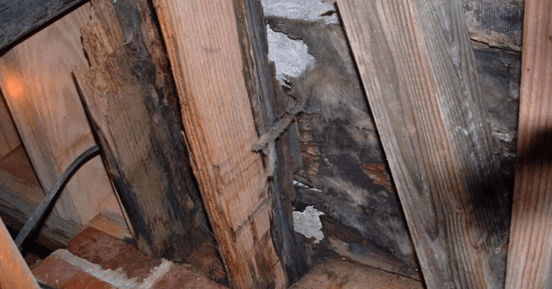TS Eliot’s poem The Hollow Men famously ends with the lines, “this is the way the world ends, not with a bang, but a whimper.” And while water damage to your home isn’t the end of the world, it can be devastating and often follows the path of the poem causing damage not with a bang, but a whimper. Slow drips and leaks can wreak havoc on your home and your health if they go unnoticed, just as much, if not more, than a massive flooding event.

Signs of Slow Leaks
Slow leaks can come from a number of sources, including damaged pipes, leaky appliances, and poorly connected plumbing fixtures. They can often be difficult to detect, so they go unnoticed for long periods of time, causing damage the whole way. Some tell-tale signs of slow leaks are:
- Drastic increase in water bills
- Decreased water pressure
- Random areas of wet or water-stained drywall
- Musty and moldy smells
- Stained or bubbled ceiling paint
Slow Leak Damages
When slow leaks go unnoticed and water is left to sit over time, it can pose serious risks to both the structural integrity of your property and the health of those inside.
Structural Damage
Structural damage from slow leaks can affect both the aesthetics of the home and the structural integrity of the home. The most immediate effects of water damage are those that may alert you to the problem in the first place: staining, discoloration, and streaks on the walls or ceiling. These stains can be difficult to remove and cover and may require replacing the drywall. Aesthetics are only the tip of the iceberg, though, and persistent water damage can cause severe structural problems. Warped and swollen drywall, weakened framing, rotting support beams, and more can seriously compromise the integrity and safety of the structure. Slow leaks can quickly take your home from ugly to completely unlivable if they aren’t addressed.
Mold Growth
Mold spores exist in the air virtually everywhere, causing no problems as long as the area stays dry. Mold needs moisture, oxygen, and an organic food source to grow and reproduce. Obviously, oxygen is readily available in our atmosphere, and whether you’re aware of it or not, most of the construction materials that make up your home are organic materials. The introduction of moisture into a property creates the perfect environment for mold to grow. Undetected leaks give mold the chance to freely proliferate and infest your home, potentially damaging the structure and risking the health and well-being of everyone in the home.
Fire Hazards
When thinking of slow leaks and water damages, most people wouldn’t immediately jump to fire damage. The problem occurs when undetected water comes into contact with outlets, wires, and electrical boxes. This is obviously unsafe in terms of electricity but also has the potential to cause fires due to shorted wires. If you see water damage near electrical outlets or wires, don’t try to fix the problem yourself as this is a very unsafe situation. Instead, call an electrician right away.

